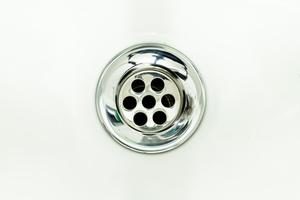 Keeping your drains looking and feeling their best will go a long way toward guaranteeing the health of your home’s plumbing overall. There are a number of ways to do this, but the best – and easiest – way is practicing regular drain maintenance.
Keeping your drains looking and feeling their best will go a long way toward guaranteeing the health of your home’s plumbing overall. There are a number of ways to do this, but the best – and easiest – way is practicing regular drain maintenance.
We’ve gathered everything you need to know to keep your drains healthy right here for easy reference, so take a look:
1. Know what you should never put down the drain.
The list isn’t too long, but it’s still important. First things first: never pour liquid fats, oils, or grease down the drain. As they cool, they become more solid and cling to the insides of pipes, building up into clog-inducing paste. Other things that shouldn’t go down your drains include:
-
- Eggshells, because their edges catch on other items and grow into larger clogs.
- Coffee grounds, because they stick to pipe walls and build into a paste when crammed into small areas.
- Unused medications, because they could leach into water reservoirs.
- Goldfish, because it just isn’t very nice.
2. Know the best way to clean your drains.
Guess what? The answer isn’t liquid drain cleaners. It’s never liquid drain cleaners, if you want to maintain the integrity of your drains and pipes. Here’s why: they can’t tell the difference between the clog and the pipe. When a chemical drain cleaner finishes eating away at a clog, it’s going to keep eating away at your pipes. Not a good idea. Instead, try these other, lower impact ways of maintaining clear and clean drains:
-
- Pour a large pot of very hot (but not boiling) water down a household drain. Follow it up with some cool water to flush out the clogs you just melted away.
- Alternatively, you can use baking soda and vinegar. We recommend giving your drains this treatment once a month. All you have to do is pour half a cup of baking soda down your drain and chase it with half a cup of vinegar. Plug the sink and let it sit overnight. Flush the drains with hot water in the morning and they’ll work (and smell) like they’re brand new.
3. Know which tools to have on-hand for removing clogs.
Keep these three things on hand: an auger, a snake, and a cup plunger. These three tools all work to help remove clogs when they occur despite your best efforts. Cup plungers work on the small clogs, and snakes work on the bigger ones.
If you have any more questions about maintaining the integrity of your home’s drains, or need to talk to someone about fixing a troubling clog, give the pros at Len the Plumber a call. We’ll have your drains working like they’re new in no time!
The post Drain Maintenance: A How-To Guide appeared first on Len The Plumber.
No comments:
Post a Comment